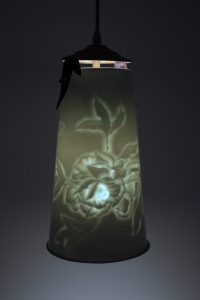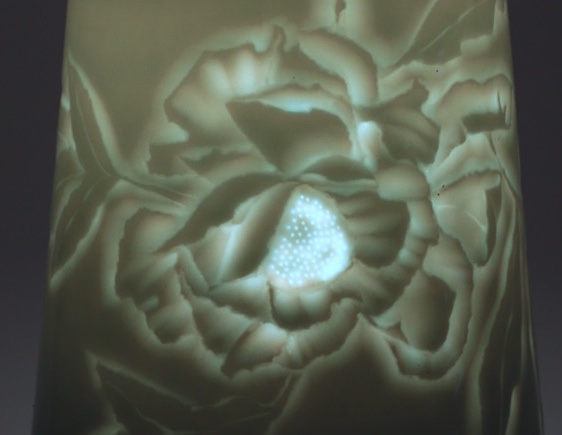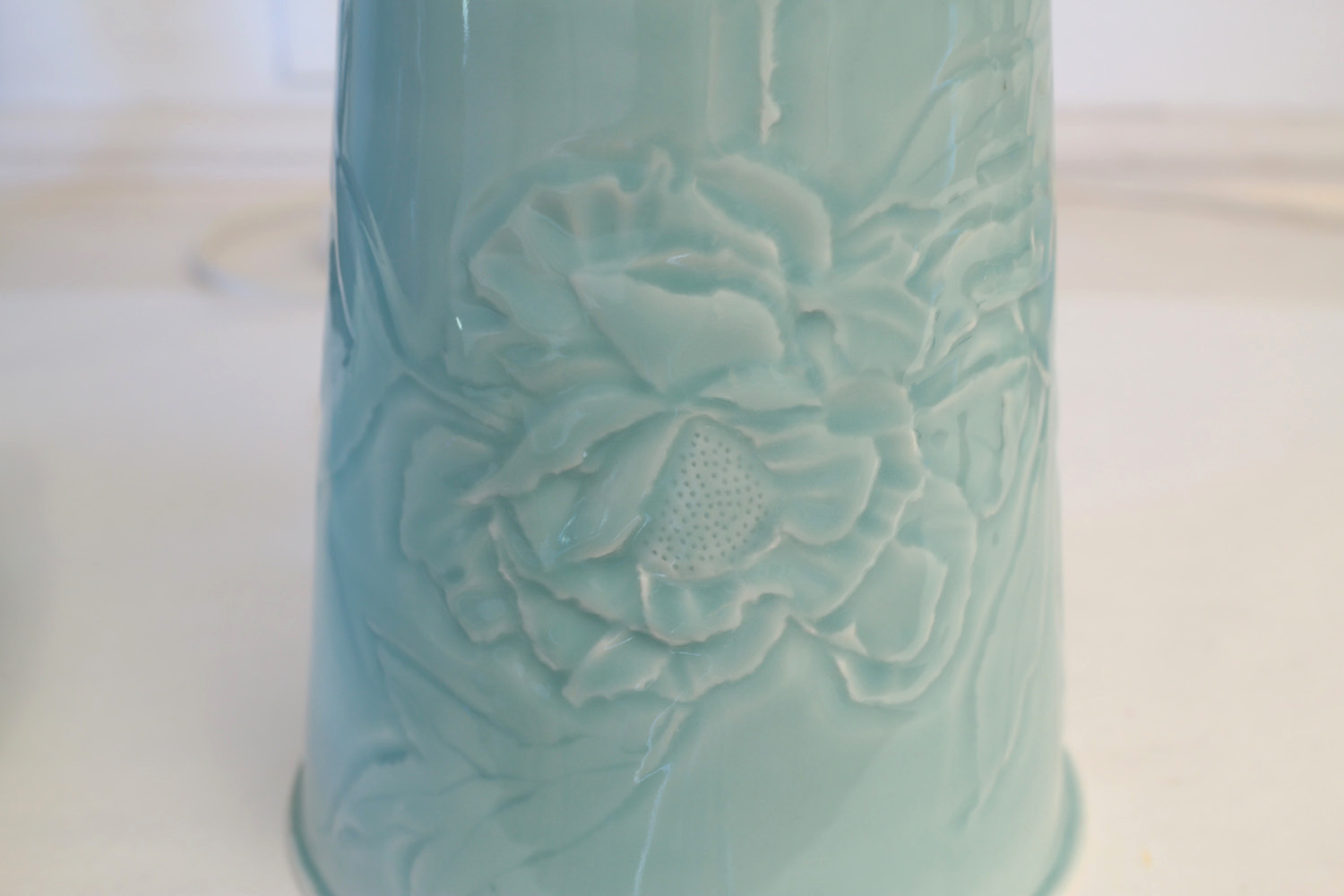 I started to work on bas relief or low relief carving before I knew what it was called. A neighbour in Lethbridge taught me the basics of leather carving when I was in Jr. High School. I earned my way through high school and some of art school making ladies purses and wallets. Sixty years later I am still trying to get it right only now in porcelain.
I started to work on bas relief or low relief carving before I knew what it was called. A neighbour in Lethbridge taught me the basics of leather carving when I was in Jr. High School. I earned my way through high school and some of art school making ladies purses and wallets. Sixty years later I am still trying to get it right only now in porcelain.
I wanted to share this bas relief technique with you because it is so old and so useful to any potter. It is one of the slowest jobs in my world, and for me that makes it special. I am sure someone will try to speed up the process, but for me the joy is in the thoughtful, quiet and slow pace of the work. It is like watercolor…everything counts and you have to get it right the first time!
In this case, I am making a lamp fixture that will hang over top of a table setting for my exhibition at David Kaye Gallery in Toronto in February. The show is called Table Talk. This exhibition is all about how my celadon glaze works on low relief surfaces. Magic. Ok, maybe not, but close.

Some technical info…bear with me. The shade form is slip cast. The cross section is thin…about 1/8 inch and quite fragile. A “cookie” of thicker cast porcelain is made so that the shade has a home for the entire process. This cuts out handling problems as some areas are virtually paper thin when finished. The cookie is the only thing that gets handled but it is still a bit of a nightmare moving the shade on the cookie into the kiln. The cookie goes into the cone 13 firing with a sprinkle of silica sand on it to keep the shade and the cookie from fusing and to cut down on pyro-plastic distortion. The cookie and the shade shrink together in other words…but do not fuse. This is the same concept as the Tang Chinese potters used for their camel and horse sculptures…which always have the feet attached to a big bit of clay earth that is supporting, and in the firing shrinking and moving the same way as the feet of the horse. Smart!

The advantage of bas relief in this case is twofold. When the light if off, the peony is realistic and quiet, but when lit it reverses and becomes bright and full of energy. I have been working this way for about forty years, and it never ceases to interest me. I hope you will get some value from seeing how this is done. Simple tools, few of them, and time…Beethoven and Oscar Peterson help out.
There are two videos below. The first is a time-lapse and the second is the full length video. Enjoy
